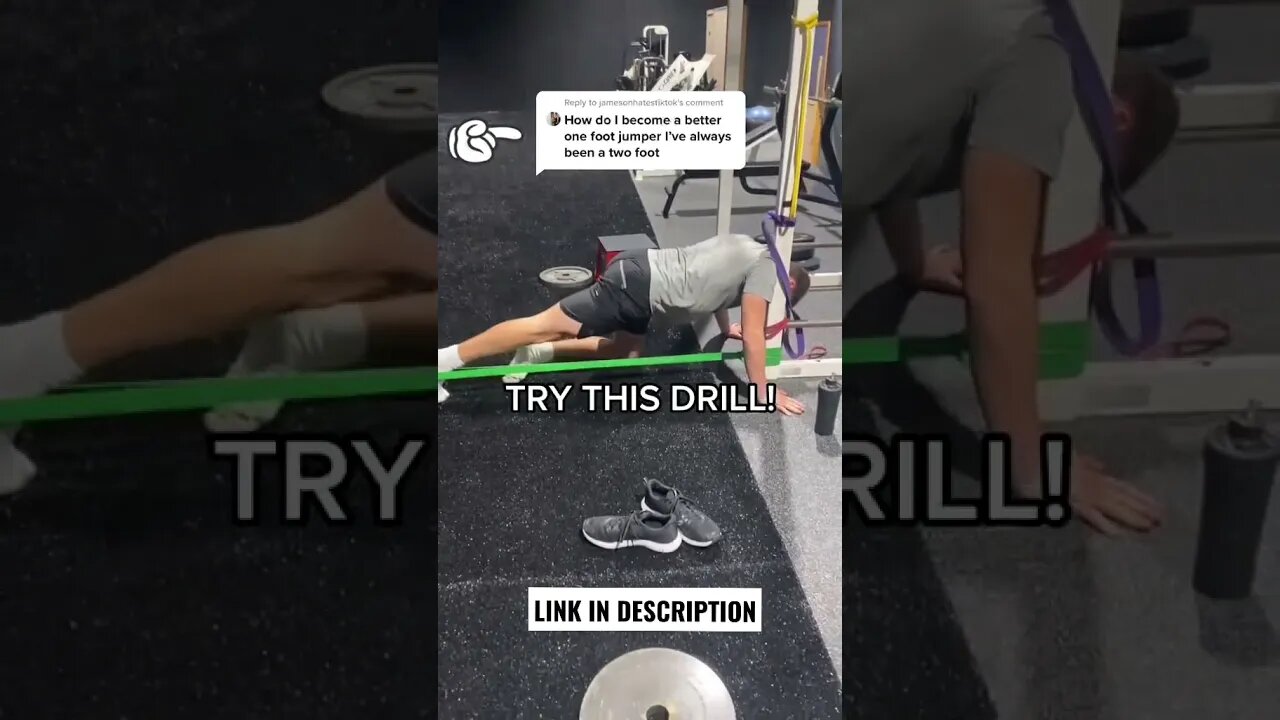Premium Only Content

HERE ARE A FEW DRILLS AND TIPS FOR SINGLE LEG JUMPING 🦵💥🚀 (LINK IN DESCRIPTION) #Shorts
➡️*Click ORDER NOW and get started today*
https://bit.ly/VerticallJumpTraining
HOW TO PROGRESS YOUR VERTICAL JUMP TRAINING
HOW TO PROGRESS YOUR VERTICAL JUMP TRAINING (THE SECRET TO UNLIMITED ATHLETIC SUCCESS)
You’ve heard the phrase; The sky’s the limit. If that’s true, why are so many athletes struggling to improve their athleticism?
They’re hitting walls when trying to progress in areas of speed, vertical jump, strength, explosiveness. What’s going on?
The simple answer is, they’re missing progression.
Just like you can’t expect to lift the same weight week after week and get stronger, you can’t perform the same movements and expect to get better.
To improve, you must provide your body with a new stimulus to adapt to.
That single leg broad jump you’ve been performing for months now, eventually, your body will get used to it.
You’ve got to elevate it, progress it.
All this said, you may be confused on how to progress some movements.
So, in this post, I want to share simple athletic progressions for the vertical that you can use in your training.
In future posts, I’ll go over strength, speed, core, and auxiliary progressions.
These posts will be some of the most high value posts I’ve ever written. They essentially are revealing my complete coaching methods.
VERTICAL JUMP PROGRESSION
There’s a total of eight progressions here. Some are done concurrently, others build upon one another.
What I’m going to do here is couple these vertical jump progressions by month.
This is so you can see how one piece of the vertical jump is progressed throughout a three month training cycle.
MONTH ONE OF VERTICAL JUMP TRAINING
1. UNILATERAL PLYOMETRICS
Single leg plyometrics serve as the explosive base for your vertical jump.
I always train them in the vertical, horizontal, and lateral planes so the benefits you receive from them creep into multiple facets of performance.
This includes acceleration, top speed, and quickness.
2. CONNECTED JUMPS (LOW LEVEL)
Connected jumps aren’t sexy. Sometimes they suck.
But they’re important to build work capacity along with an explosive base.
Most connected jumps I perform in month one are bilateral.
These include squat jumps, pogo jumps, lunge jumps, and low squat jumps.
I emphasize good landings, body control, and short ground contact times with these connected jumps.
3. FORCE ABSORPTION
An often overlooked aspect of the vertical jump is an athlete’s ability to absorb force.
Truth is, the more force you can absorb, the more you can produce.
Therefore, to jump higher, you must have a high capacity to absorb force.
To improve this quality, I start with simple depth drops.
Here, I emphasize a good landing. This means not putting too much pressure on the knees, and having the hips loaded, ready to jump again.
MONTH TWO OF VERTICAL JUMP TRAINING
1. CONNECTED UNILATERAL JUMPS
In month two, I progress the bilateral connected jumps into unilateral jumps. Usually, I only progress the pogo jumps to single leg pogo jumps, as there’s low risk for error in this move.
2. RESISTED CONNECTED JUMPS
Another way I like to progress the connected jumps performed in the last phase is by simply adding resistance.
I like to add no more than 10% of an athlete’s bodyweight.
So, if an athlete weighs 200 pounds, no more than 20 pounds of resistance.
3. REACTIVE JUMPS
Here, we’ll take that force absorption ability developed in the last phase and add a reactive component.
As an example, we can perform a depth to broad jump, or a depth to tuck jump.
You’ll want to emphasize minimal ground contact times with reactive jumps.
You’ll need to focus on landing with your hips locked and loaded to achieve this.
MONTH THREE OF VERTICAL JUMP TRAINING
1. INTEGRATED PLYOMETRICS
Last month, you saw reactive jumps.
These are usually performed in the vertical plane.
We’ll be working the horizontal and lateral plane with integrated plyometrics.
An example is a single leg triple jump, or a single leg broad to lateral broad.
Here, you’ll want to emphasize ground contact time, and an ability to explode, reload, and explode.
2. SPORTS SPECIFIC PLYOMETRICS
Movements that fit into your category depend on your sport.
If you’re a basketball athlete looking to dunk, you’ll perform some dunks, or jumps at the rim.
If your goal is to just jump higher, you’ll do max vertical jumps, or raise the height on box jumps.
These jumps are meant to suit your needs so that all of your vertical jump training carries over to your sport!
#fyp #foryou #gotthisforyou #familytime #basketball #dunk #verticaljump #training #jumpman
HERE ARE A FEW DRILLS AND TIPS FOR SINGLE LEG JUMPING 🦵💥🚀 #Shorts .
. .
Link do Video: https://youtu.be/fBAMTzRvBI8
-
 1:30:48
1:30:48
Redacted News
11 hours agoBREAKING! TRUMP AND PUTIN NEARING PEACE BUT EUROPEAN WARMONGERS TRYING TO STOP IT | REDACTED
190K249 -
 52:40
52:40
Candace Show Podcast
11 hours agoSaturday Night Lively: What Were They Thinking? | Candace Ep 148
158K154 -
 3:30:06
3:30:06
Man in America
6 hours agoDocumentary: The Money Masters 'How International Bankers Gained Control of America'
47.3K11 -
 1:10:40
1:10:40
PMG
1 day ago $2.26 earnedTom Hanks Plays a Racist MAGA Supporter On SNL!! UNBELIEVABLE
22.6K3 -
 2:11:29
2:11:29
Adam Does Movies
10 hours ago $1.72 earnedAsk Me Anything - Live!
29.8K1 -
 56:18
56:18
Flyover Conservatives
1 day agoFollow the Money: $4.7 Trillion in Government Fraud EXPOSED!; Flu Shots, Fear & Big Pharma Lies—What They DON’T Want You to Know - Dr. Stella Immanuel | FOC Show
34.9K1 -
 1:16:24
1:16:24
Anthony Rogers
1 day agoEpisode 354 - Current Events, Weather, and Other Clickbait
36.2K2 -
 25:10
25:10
Producer Michael
11 hours agoTHE HOTTEST FRAGRANCES FOR 2025!
35.1K2 -
 18:44
18:44
Clownfish TV
5 days agoHollywood Has a DEI Temper Tantrum!
22.2K7 -
 1:01:42
1:01:42
The StoneZONE with Roger Stone
6 hours agoRoger Stone Provides Crucial Update On Classified JFK Assassination Docs | The StoneZONE
38.4K7